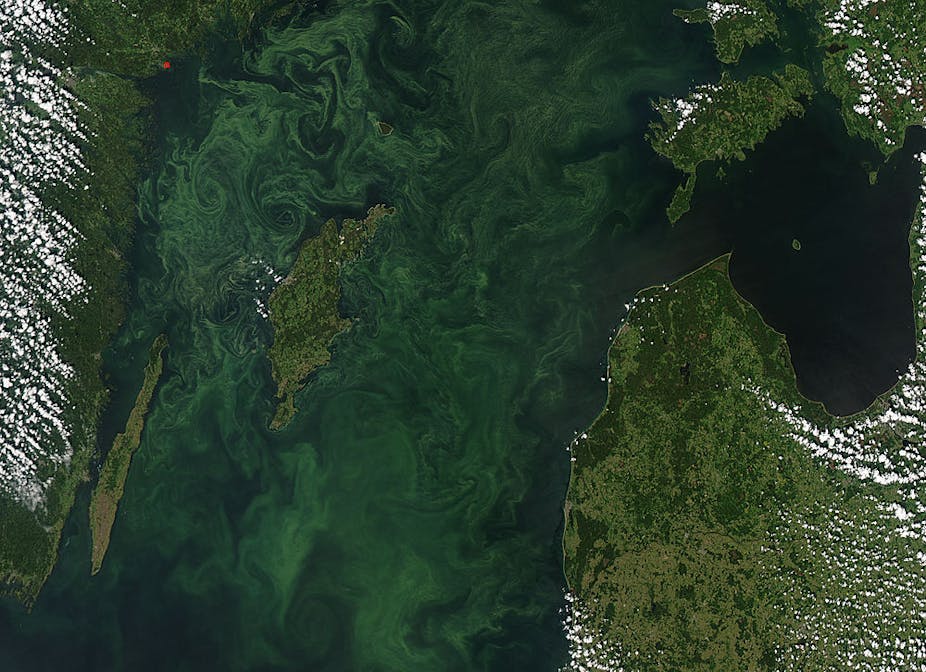Sea-life needs oxygen to breathe just as animals on land do, and when oxygen levels in ocean water begin to fall sea creatures can suffocate just as we would. The result is often large expanses of ocean that cannot support life - a dead zone. As the American Lung Association’s tagline says, “Nothing else matters if you can’t breathe!”
The number of coastal water areas with depleted oxygen levels is rising. The World Resources Institute has tracked more than 700 dead zones around the world, accounting for an area the size of New Zealand. Low oxygen is a particularly severe disturbance because of the catastrophic changes it wreaks upon ecosystems. Most organisms need oxygen to live so oxygen depletion severely affects marine biodiversity.
The term “dead zone” was first coined in the 1970s. It was used to describe sea areas where the oxygen content had fallen lower than 2mg/l, also known as hypoxia. In dead zone areas trawling fisheries collapsed - those creatures that could move, such as commercially useful fish, shrimp and crabs, left for more oxygenated waters. Other organisms that live attached to the seafloor tend to be more tolerant to low oxygen levels, but with insufficient oxygen massive die-offs can occur. If oxygen depletion occurs particularly fast, even mobile creatures can be trapped and die.
The largest hypoxic areas worldwide are in the Baltic Sea, with an average hypoxic area of 49,000km2 over the last 40 years, roughly the size of Slovakia, and the Gulf of Mexico, where the average extend of 17,000km2 over the past five years is the same size as Lake Ontario.
Predictions released last week for this summer suggest the Gulf of Mexico’s dead zone will extend to between 18,871 and 22,173km2 - among the largest 10 ever recorded.
Massive algal blooms
The prime cause for hypoxia is human activities on land, chiefly prolonged and intensive use of agricultural inorganic fertiliser which, just as it helps crops grow, also fertilises marine plants and algae. Changes in land use, deforestation, erosion, and discharges of industrial and municipal waste water also contribute to an increase in the amount of nutrients in rivers flowing into coastal waters.
This increase in nutrients leads to massive algal blooms. While the algae is not necessarily harmful (although some can be, such as Karenia brevis, known as the “Red Tide”), their rapid growth consumes oxygen faster than it can be replaced, leading to hypoxia, or even anoxia, where oxygen is effectively absent. Bacteria that feed on dead algae, plankton and other creatures further accelerate the de-oxygenation process.
The weather is also a factor as storm-water discharge, flooding, droughts, and elevated temperatures affect the concentration of nutrients and the extent to which they are dispersed, and so the extent and severity of the dead zone. Temperature too plays an important role, as algal and bacterial activity increases with temperature - this is why most hypoxic events occur in the summer. Warming also produces stratification, where the water separates into layers based on temperature or salinity, creating a physical barrier that prevents oxygen reaching the bottom.
Tackling the problem
Technological solutions have been proposed for the Baltic Sea, but the implementation of these “solutions” would have severe environmental consequences.
Small changes to our diet can have important consequences on the environment. Reducing meat consumption is one of the actions all citizens can do to mitigate the growth of dead zones and our individual impact on the environment. The amount of water needed to produce a kilogram of meat is 10 times greater than that needed to produce a similar amount of arable crops. As approximately one third of all arable land is used to grow crops for animal feed, keeping less livestock will reduce the amount of fertilisers used to grow their feed, in turn reducing the amount of nutrients washed into the sea. We can do the same in our own gardens, using compost instead of fertilisers.
Organic farming does not use synthetic, inorganic fertilisers, so encouraging organic farming would reduce the impact of nutrients on rivers and coastal waters.
A recent scheme of nutrient trading, works in the same way as emissions trading schemes or carbon credits. Farmers can trade nutrient credits between them, providing an incentive to use less fertlisers than they have credits to use in order to sell excess credits to others or to regulated facilities.
And as temperature affects the severity of algal blooms, anything we can do to reduce CO2 emissions to keep the planet cooler will will also help keep our oceans breathing more easily.

